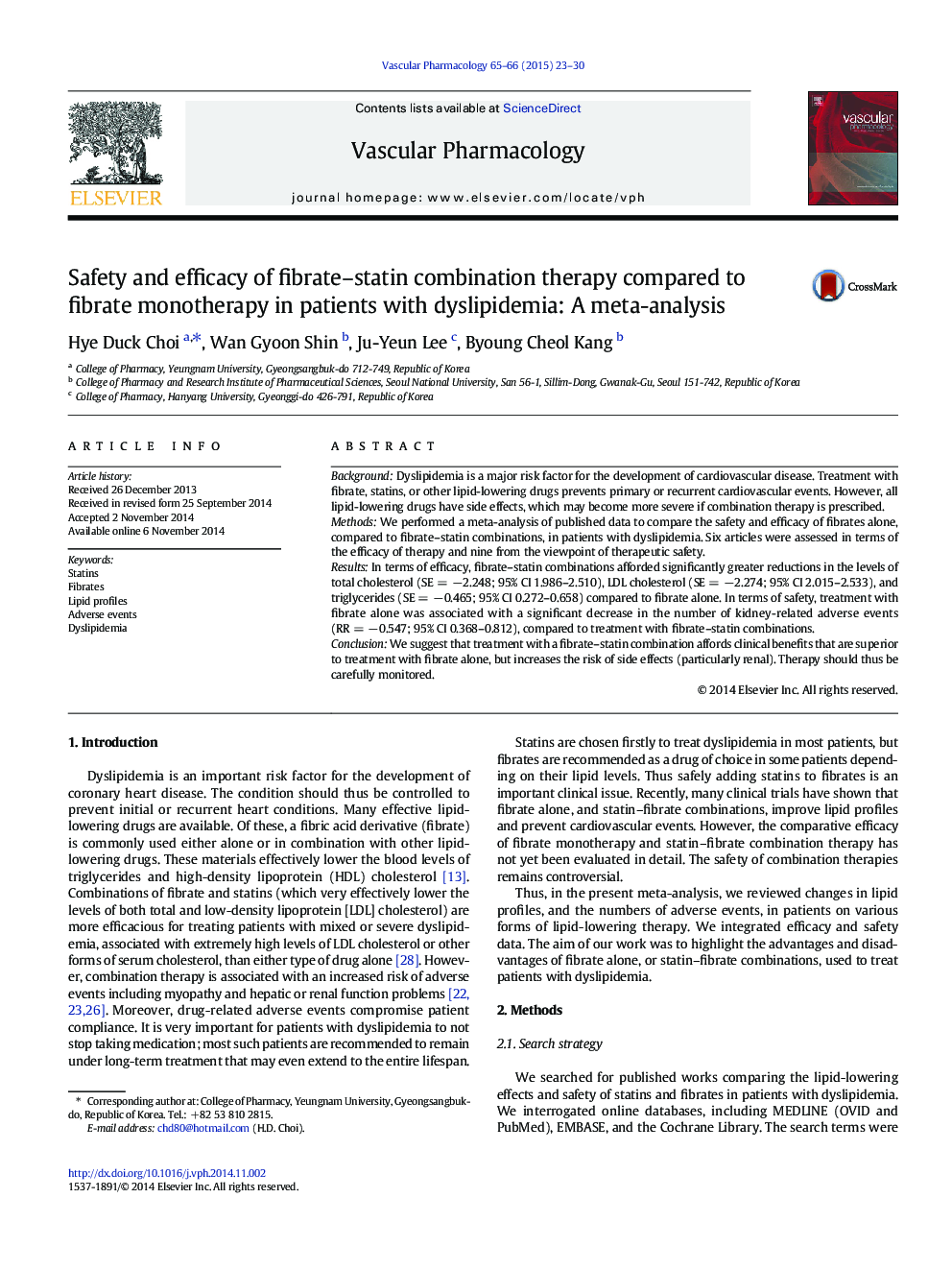| Article ID | Journal | Published Year | Pages | File Type |
|---|---|---|---|---|
| 2574135 | Vascular Pharmacology | 2015 | 8 Pages |
BackgroundDyslipidemia is a major risk factor for the development of cardiovascular disease. Treatment with fibrate, statins, or other lipid-lowering drugs prevents primary or recurrent cardiovascular events. However, all lipid-lowering drugs have side effects, which may become more severe if combination therapy is prescribed.MethodsWe performed a meta-analysis of published data to compare the safety and efficacy of fibrates alone, compared to fibrate–statin combinations, in patients with dyslipidemia. Six articles were assessed in terms of the efficacy of therapy and nine from the viewpoint of therapeutic safety.ResultsIn terms of efficacy, fibrate–statin combinations afforded significantly greater reductions in the levels of total cholesterol (SE = −2.248; 95% CI 1.986–2.510), LDL cholesterol (SE = −2.274; 95% CI 2.015–2.533), and triglycerides (SE = −0.465; 95% CI 0.272–0.658) compared to fibrate alone. In terms of safety, treatment with fibrate alone was associated with a significant decrease in the number of kidney-related adverse events (RR = −0.547; 95% CI 0.368–0.812), compared to treatment with fibrate–statin combinations.ConclusionWe suggest that treatment with a fibrate–statin combination affords clinical benefits that are superior to treatment with fibrate alone, but increases the risk of side effects (particularly renal). Therapy should thus be carefully monitored.
Graphical abstractFigure optionsDownload full-size imageDownload high-quality image (139 K)Download as PowerPoint slide
